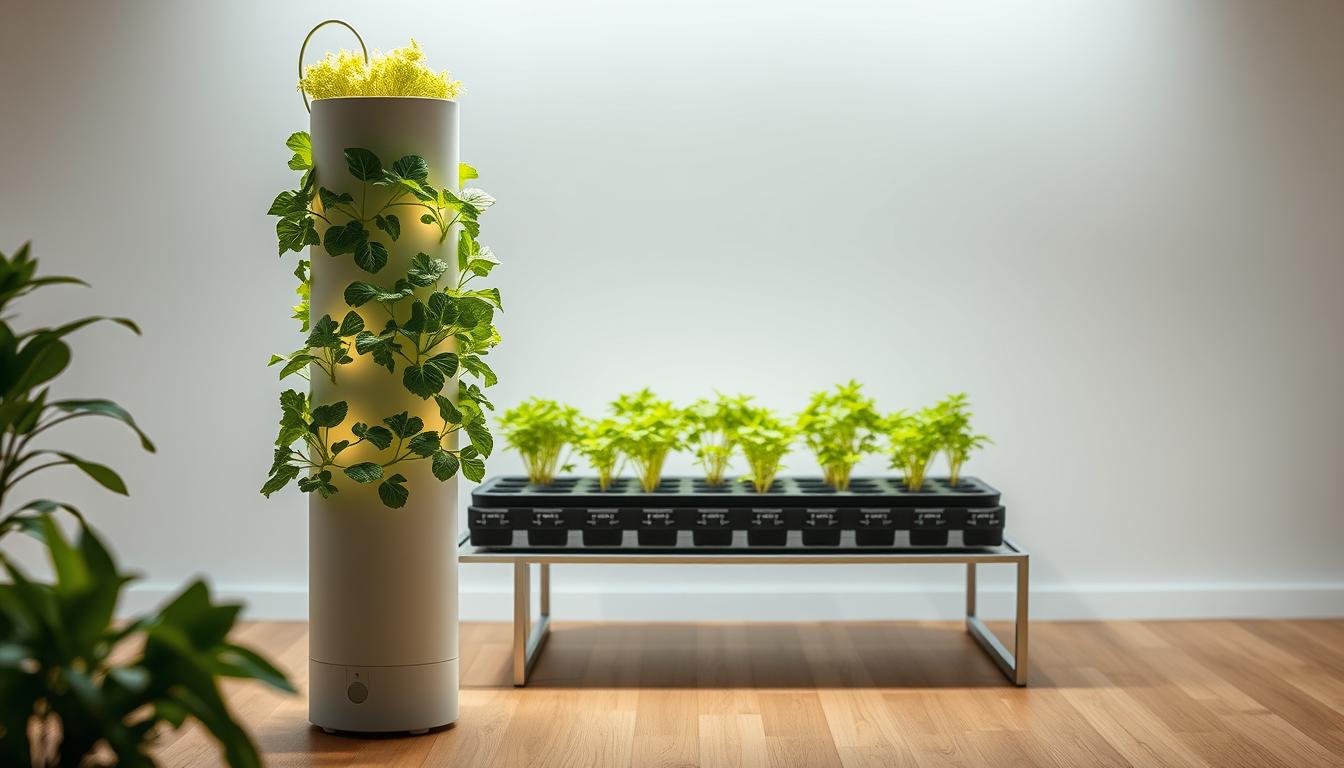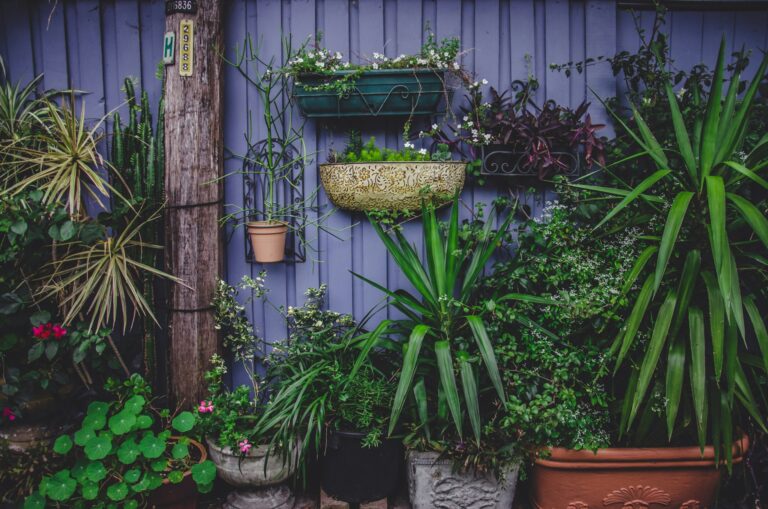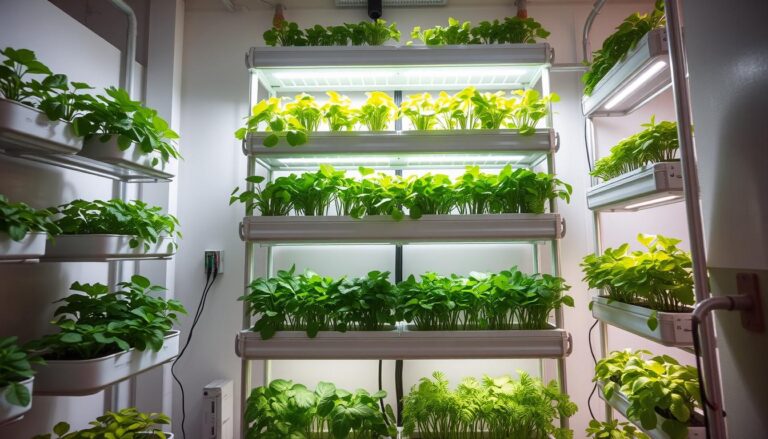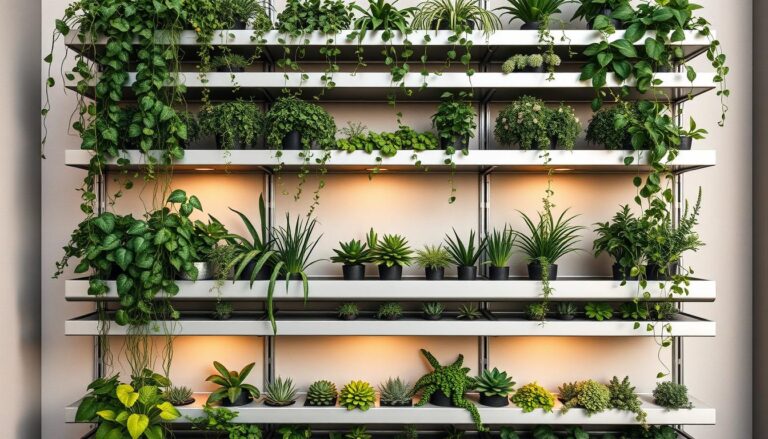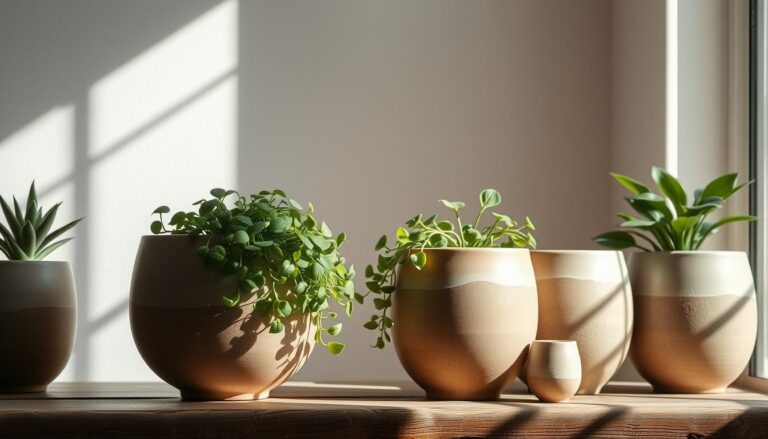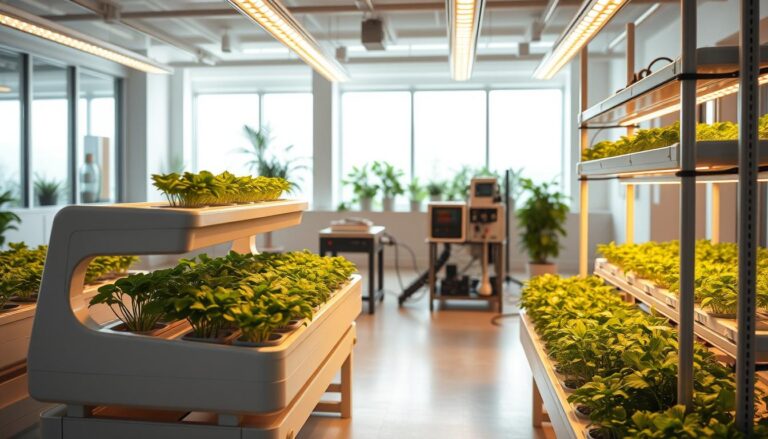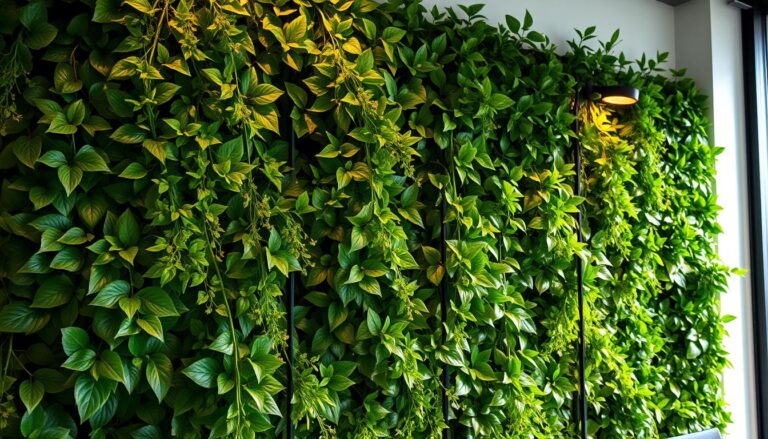Vertical Tower Garden: Compact Design, Bountiful Harvest
Imagine stepping onto your balcony or patio and plucking ripe tomatoes, crisp lettuce, or fragrant herbs—all grown in a space no larger than a coat rack. For many city dwellers, this feels like a distant dream. But what if you could turn even the tiniest corner into a thriving green oasis? That’s where modular hydroponic systems shine, blending innovation with simplicity to redefine how we grow food at home.
Nutraponics® offers a stackable, mobile design that eliminates the guesswork of traditional gardening. Instead of wrestling with soil or unpredictable weather, you get precise automation. The setup uses 90% less water than conventional methods, delivering nutrients directly to roots for faster, healthier plant development. Whether you’re nurturing leafy greens or juicy strawberries, every harvest feels like a small victory against urban constraints.
This approach isn’t just about saving space—it’s about sustainability. By avoiding pesticides and reducing waste, you contribute to a greener planet while enjoying fresher meals. The system’s flexibility lets you start small and expand as your confidence grows, making it ideal for beginners and seasoned growers alike.
Table of Contents
Overview of Vertical Tower Gardens
Limited outdoor space doesn’t have to mean limited harvests with today’s gardening tech. Hydroponic systems let you grow herbs, vegetables, and fruits in a fraction of the area traditional methods require. These setups use stacked layers to maximize every inch, making them perfect for patios, balconies, or even kitchen corners.
What Is a Vertical Tower Garden?
A vertical tower garden is a soil-free growing method that relies on nutrient-rich water solutions. Instead of dirt, plants thrive in a controlled base—like clay pellets or coconut coir—that anchors roots while allowing efficient nutrient absorption. Systems like Nutraponics’ Hydroponic Garden Tower pump water directly to each plant, ensuring consistent hydration and faster growth.
These setups eliminate common gardening headaches. Pests struggle to invade without soil, and automated timers handle watering. You’ll use 90% less water compared to conventional plots, thanks to closed-loop recycling. The vertical design also simplifies maintenance—no bending or kneeling required.
Advanced towers distribute resources evenly across all levels. Whether you’re growing basil or strawberries, each plant receives the ideal mix of light, water, and nutrients. This precision creates healthier crops and higher yields, even in tight urban spaces. Start with a single unit and expand as your green thumb grows!
Benefits and Advantages of Vertical Tower Gardens
City living often means choosing between fresh herbs and floor space—but innovative growers have found a smarter solution. Modern hydroponic setups deliver impressive yields while fitting seamlessly into apartments, patios, or kitchens. Let’s explore how these systems transform tight areas into productive green zones.
Space Efficiency and Water Conservation
Hydroponic systems like Foody’s design use vertical space to grow up to 20 plants in a 3-square-foot footprint. Their auto-circulating pumps deliver nutrients directly to roots, eliminating wasted water. Compared to soil gardening, you’ll save 90% more water—a critical choice in drought-prone regions.
Precise temperature control keeps roots thriving. Cooler root zones prevent mold, while warmer settings boost growth rates. This balance ensures leafy greens and herbs develop faster, with no guesswork required.
Sustainable Urban Farming Solutions
These setups turn balconies into year-round farms. Stackable units adapt to your available space, letting you start small and expand. You’ll avoid pesticides and reduce grocery trips, cutting plastic waste from store-bought produce.
Healthy roots mean healthier plants. The closed-loop design recycles water and nutrients, so nothing goes to waste. Whether you’re growing basil or cherry tomatoes, every harvest supports eco-friendly living without sacrificing flavor or convenience.
Choosing the Best Vertical Tower Garden for Your Space
Selecting the right setup transforms cramped areas into lush growing zones. Focus on designs that balance durability with smart resource use. High-quality systems like Nutraponics® and Foody prioritize materials that withstand weather shifts while optimizing water flow.
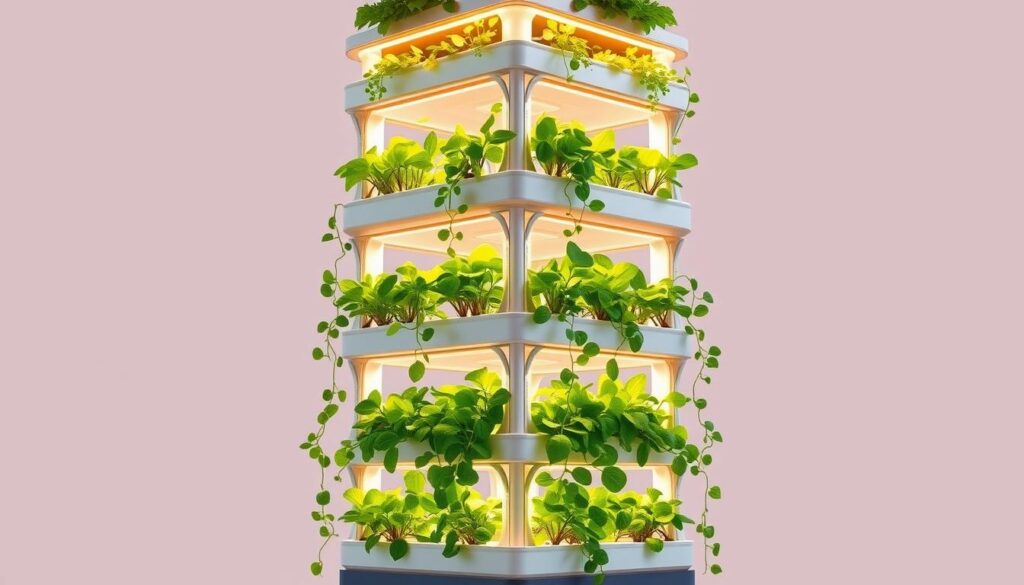
Design Considerations and Build Quality
Start by examining frame materials. Stainless steel or UV-resistant plastics last longer outdoors. For indoor setups, compact profiles matter more. Nutraponics’ automated pumps reduce water use by 90%, while Foody’s modular trays simplify expansion.
Net pots play a key role in root health. Look for ones with secure grips to prevent slippage. Deeper baskets support heavy crops like peppers, while shallow designs suit herbs. Pair them with drip-free irrigation to avoid messes.
| Feature | Outdoor Systems | Indoor Systems |
|---|---|---|
| Material Durability | Weatherproof polymers | Space-saving ABS plastic |
| Lighting Needs | Sunlight-adaptive | Built-in LED panels |
| Water Capacity | 5+ gallon reservoirs | 3-gallon tanks |
Check product specs for pump warranties—18+ months signals reliability. User reviews often reveal hidden perks, like Foody’s spill-proof connectors. Remember: a well-built hydroponic tower yields 30% more greens than flimsy models.
Prioritize systems with clear maintenance guides. Self-cleaning filters save hours monthly. Whether you choose stackable units or freestanding designs, quality parts ensure your garden thrives for seasons.
Featured Hydroponic Tower Garden Products
Urban growers face a dilemma: fresh produce versus limited square footage. Modern hydroponic systems solve this with smart engineering. Two standout options—Nutraponics® and Foody—deliver tailored solutions for different needs. Let’s explore how these systems outperform traditional farming methods in efficiency and adaptability.
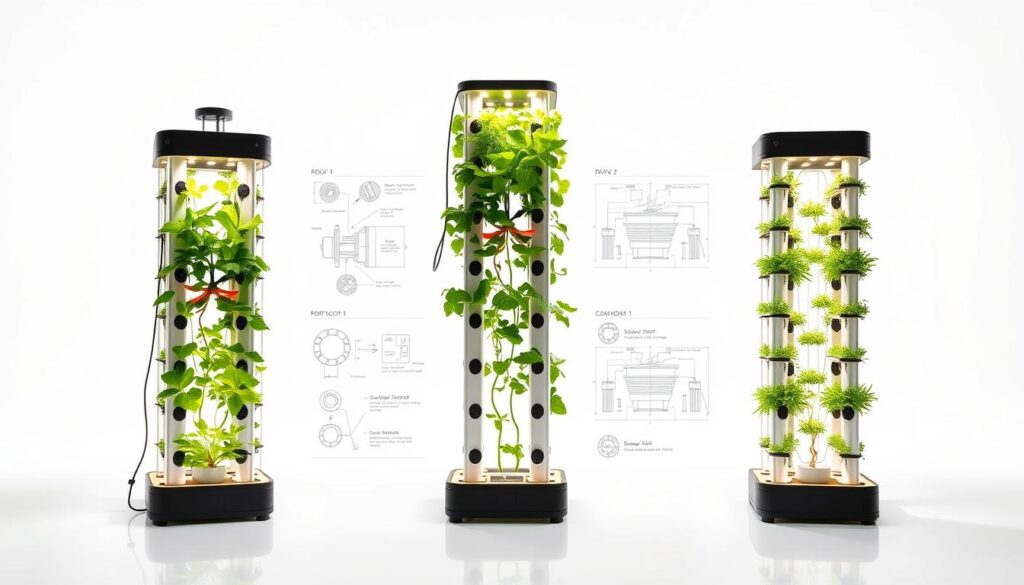
Nutraponics®: Automated, Modular, and Efficient
Nutraponics® redefines hydroponic growing with stackable units and self-regulating pumps. Its automated sensors adjust water nutrients and pH levels daily, eliminating manual checks. The modular design lets you expand from 12 to 36 plants without extra tools—perfect for evolving urban spaces.
Unlike soil-based setups, this system uses 90% less water by recycling nutrient solution. No subscriptions or complex schedules are needed. Just plug in, add seeds, and watch leafy greens thrive in half the time of traditional farming.
Foody Hydroponic System: Versatile and Cost-Effective
Foody’s magnetic water pumps and climate-resistant net pots make hydroponic growing accessible. The setup thrives indoors under LED lights or outdoors in partial shade. Its budget-friendly price doesn’t skimp on performance—expect 20% faster growth compared to basic kits.
The secret lies in precise water nutrient delivery. Roots absorb minerals 3x more efficiently than in soil, yielding juicier strawberries and larger basil leaves. Cleanup is effortless thanks to spill-proof connectors and dishwasher-safe parts.
Both products slash water use versus traditional farming while doubling harvests. Nutraponics® suits tech lovers wanting hands-off control, while Foody appeals to practical growers seeking value. Either choice transforms cramped corners into productive farming hubs without the guesswork.
Maximizing Growth with Hydroponic Systems
What if every drop of water and nutrient in your garden worked smarter, not harder? Modern hydroponic setups achieve this through precise engineering. By optimizing resource delivery, these systems outperform traditional methods while fitting seamlessly into urban lifestyles.
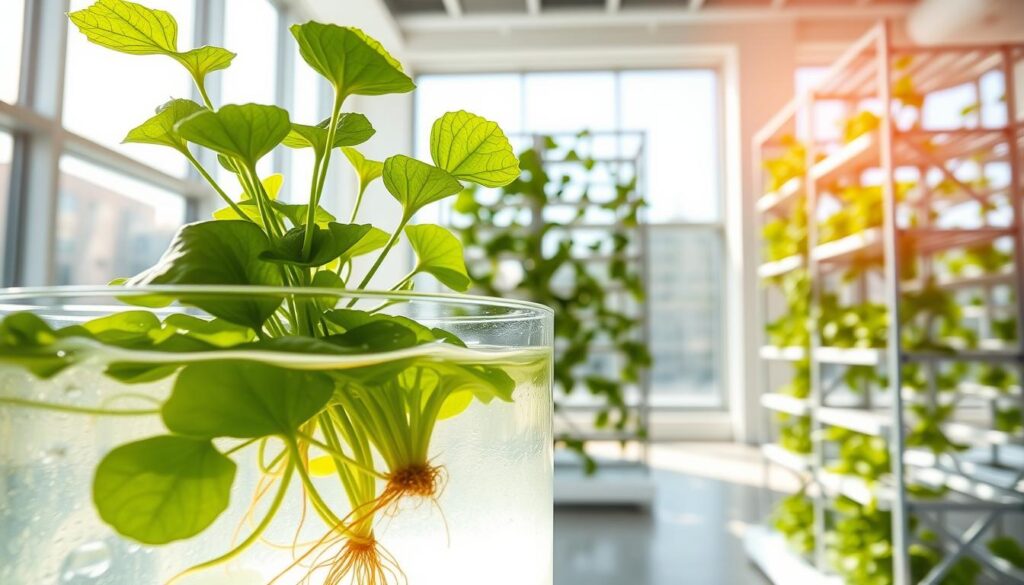
Nutrient Solutions and Water Efficiency
Hydroponic systems deliver minerals directly to plant roots through customized nutrient solutions. Automated sensors monitor pH levels and adjust doses in real time. This prevents waste and ensures plants absorb 40% more nutrients compared to soil-grown crops.
Closed-loop designs recycle water continuously, slashing usage by 90%. Regulated temperatures keep roots healthy, while flow meters prevent overwatering. The result? Leafy greens mature 25% faster, with consistent quality from top to bottom.
| Resource | Hydroponic Systems | Traditional Farming |
|---|---|---|
| Water Usage | 10 gallons weekly | 100+ gallons weekly |
| Nutrient Control | Precision dosing | Soil-dependent |
| Space Efficiency | 20 plants/sq ft | 4 plants/sq ft |
| Average Yield | 2.5x higher | Baseline |
Comparing Hydroponic and Traditional Farming Methods
Soil-based growing struggles with uneven nutrient distribution and pests. Hydroponics eliminates these issues through controlled environments. You’ll use fewer chemicals while harvesting more food per square foot—ideal for patios or kitchen corners.
Advanced designs like Nutraponics® use vertical stacking without wasting resources. Their modular trays ensure equal light and water access for every plant. This scientific approach makes hydroponics a game-changer for eco-conscious growers seeking reliable, high-output solutions.
Setting Up Your Vertical Tower Garden: Tips and Tricks
Transform your balcony or kitchen corner into a thriving grow zone with smart setup strategies. The Foody Hydroponic system arrives ready for assembly, complete with magnetic drive pumps, piping, and multiple growing pods. Its shipping container includes protective padding and labeled parts, simplifying unpacking.
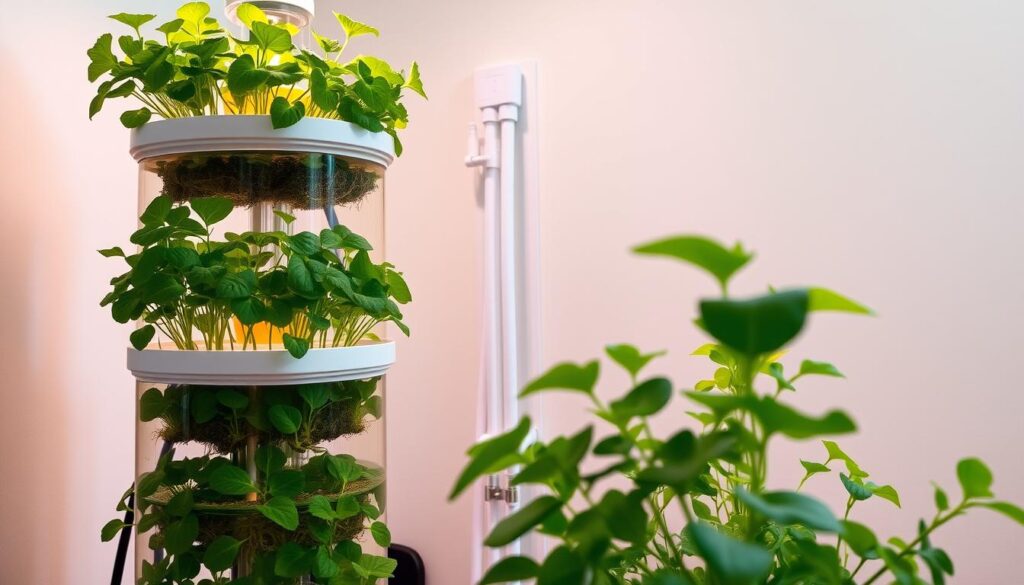
Practical Installation and Space Optimization
Start by positioning the reservoir on stable ground. Connect the magnetic pump to the central piping—no tools required. Fill net pots with your chosen medium, like coconut coir or clay pellets, ensuring roots have room to spread.
Maximize tight areas using adjustable wall mounts or corner stands. Group leafy greens at upper levels for easy access, placing fruit-bearing plants lower. This arrangement uses light efficiently while keeping heavy crops stable.
| Space Type | Ideal Placement | Recommended Medium |
|---|---|---|
| Balcony | South-facing wall | Clay pellets |
| Kitchen | Under cabinet LED strips | Coconut coir |
| Patio | Freestanding base | Rockwool cubes |
Maintenance and System Calibration
Check reservoir levels every 3 days—top up when the water line drops below the pump. Calibrate nutrient doses weekly using the included test strips. For consistent flow, clean pump filters every 14 days.
Inspect net pots monthly for root overcrowding. Rotate plants to ensure even light exposure. If leaves yellow, adjust pH levels to 5.8-6.3 using the system’s automatic doser.
| Task | Frequency | Tool Needed |
|---|---|---|
| Nutrient refresh | Every 2 weeks | pH test kit |
| Pump inspection | Weekly | Soft brush |
| Full system flush | Every 6 weeks | Distilled water |
Follow the color-coded piping guide during assembly to prevent leaks. Most issues stem from incorrect pump placement—keep it fully submerged. With routine care, your setup delivers harvests year-round.
Conclusion
Growing fresh produce at home no longer requires vast fields or perfect weather. Systems like Nutraponics® and Foody redefine sustainable cultivation, delivering plump fruits and leafy crops in cramped spaces. Their water-efficient designs slash resource use while doubling yields compared to traditional methods.
Customers praise both setups for simplifying year-round food production. Automated controls eliminate guesswork, ensuring consistent growth from seed to harvest. You’ll enjoy pesticide-free strawberries, herbs, and greens—all grown with minimal effort.
These innovations prove urban farming can be productive and eco-friendly. Whether you choose modular expandability or budget-friendly versatility, both systems transform balconies into high-yield food hubs. Their smart engineering maximizes every inch while reducing environmental impact.
Ready to upgrade your homegrown meals? Consider these innovative setups for reliable harvests and fresher ingredients. With precise technology and space-smart designs, you’ll turn limited areas into thriving sources of nutritious food.

